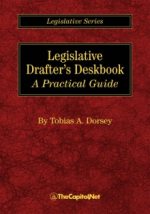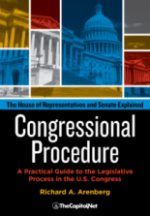From the Congressional Glossary – Including Legislative and Budget Terms
District / Congressional District / District Work Period / State Work Period
Fox News: “Stimulus” Money Goes to Congressional Districts That Don’t Exist
Each member of the House represents a district. Members of the House represent districts that, after the 2010 census, include an average of 710,767 people. District sizes ranged from Rhode Island’s two districts with just over 527,000 people, to Montana’s single district with 989,415 people. Senators represented states ranging in population from 563,626 (Wyoming) to just under 37.3 million (California). Large and diverse constituencies make it difficult for members to gauge constituent opinion on every issue. Few districts or states are solely rural, suburban, or urban. Most areas now contain a cross-section of these kinds of interests. Most districts and states are heterogeneous–they include citizens, immigrants, schoolchildren, parents, and retirees, and people with diverse ethnic backgrounds, occupations, educational levels, and socioeconomic status.
The Constitution calls for a census to be conducted at the beginning of each decade for the purpose of apportioning seats in the House to the states (Article I, Section 2). Congress by law limited the size of the House to 435 seats (see “A Note About Usage: ‘Congress’“), and the Constitution guarantees each state one seat in the House, however small its population might be. All other seats are apportioned on the basis of a formula. Following apportionment after the most recent decennial census, the states with more than one seat redistrict so that the districts have approximately equal population, minorities have opportunities to win seats, and other redistricting goals are honored. The party tilt of some districts typically makes one party’s nominee a favorite in the general election.
A Busy August District Work Period
Representatives’ districts are statewide in only seven states (see “At-large Representative“). Most representatives, therefore, are better known to their constituents than the senators representing a state. Representatives are often more involved in local affairs, or in local affairs with a federal dimension. On average, representatives make about forty trips to their home districts each year. Some may fly across the continent nearly every weekend, and House schedules try to accommodate the flight schedules to the West Coast. As an acknowledgment of the importance of going home, the House schedules district work periods / House recess when the House is in recess, and the Senate schedules nonlegislative periods (“state work periods / Senate recess“), to allow “long weekends” or full weeks to be spent in home districts and states. (See Congressional Schedules.) During a state or district work period, members attend town hall meetings, breakfasts, lunches, receptions, dinners, parades, events, ribbon cuttings, and meetings with constituents, as well as give interviews to the local press and make site visits to businesses and organizations in the member’s district.
Veterans Advisory Committee Meeting
At home, members usually maintain several district or state offices, and staff are divided between the Washington and district offices. The staff in the district offices have responsibility for much of an office’s case work and day-to-day contact with constituents. Many grass roots organizations prefer to meet with members of Congress during their state or district work periods as members are usually less distracted when home.
Some issues resonate more in one district or state than in another. Some members know that they will be reelected by a comfortable margin while others know every election campaign will be a close race. A member with a secure seat may be able to take the lead on an issue, even at the risk of alienating some voters, or might be able to spend more time on national concerns. A member in a competitive district or state may need to put his representational role ahead of a legislative role. Pork-barrel politics is often used to describe what members do to try to obtain federal funds for public-works projects, federal installations, grants, and other benefits for their districts.
Emmer Discusses the August District Work Period
Also see: A Note About Usage: ‘Congress’; At-large Representative; Congressional Schedules; Constituency Service; Pork / Pork Barrel; Reapportionment; Redistricting; § 2.20 Constituency Pressure, § 2.40 Reapportionment and Redistricting, in Congressional Deskbook.
More
- “The seven stages of the office seeker”
- Apportionment (CongressionalGlossary.com)
- Reapportionment / Redistricting (CongressionalGlossary.com)
- U.S. Constitution, Article I, Section 2
- Congressional Directory
- Find Your Representative in the House
- Congressional Districts, Printable Maps – from NationalAtlas.gov
- “The House Apportionment Formula in Theory and Practice,” CRS Report RL30711 (27-page PDF
 )
) - “House Committee Chairs: Considerations, Decisions, and Actions as One Congress Ends and a New Congress Begins,” CRS Report RL34679 (35-page PDF
 )
) - “Apportionment and Redistricting Process for the U.S. House of Representatives,” CRS Report R45951 (36-page PDF
 )
) - Congressional Schedules
- How to Contact Congress
Magic Mondays: District Work Period
Courses
- Congressional Operations Briefing – Capitol Hill Workshop
- Drafting Federal Legislation and Amendments
- Writing for Government and Business: Critical Thinking and Writing
- Custom Training
- Drafting Effective Federal Legislation and Amendments in a Nutshell, Audio Course on CD
- Congress, the Legislative Process, and the Fundamentals of Lawmaking Series, a Nine-Course series on CD
Publications

Legislative Drafter’s Deskbook: A Practical Guide

Pocket Constitution

Citizen’s Handbook to Influencing Elected Officials: A Guide for Citizen Lobbyists and Grassroots Advocates

Congressional Procedure
CongressionalGlossary.com, from TheCapitol.Net
For more than 40 years, TheCapitol.Net and its predecessor, Congressional Quarterly Executive Conferences, have been teaching professionals from government, military, business, and NGOs about the dynamics and operations of the legislative and executive branches and how to work with them.
Our custom on-site and online training, publications, and audio courses include congressional operations, legislative and budget process, communication and advocacy, media and public relations, testifying before Congress, research skills, legislative drafting, critical thinking and writing, and more.
TheCapitol.Net is on the GSA Schedule, MAS, for custom on-site and online training. GSA Contract GS02F0192X
TheCapitol.Net is now owned by the Sunwater Institute.
Teaching how Washington and Congress work ™

